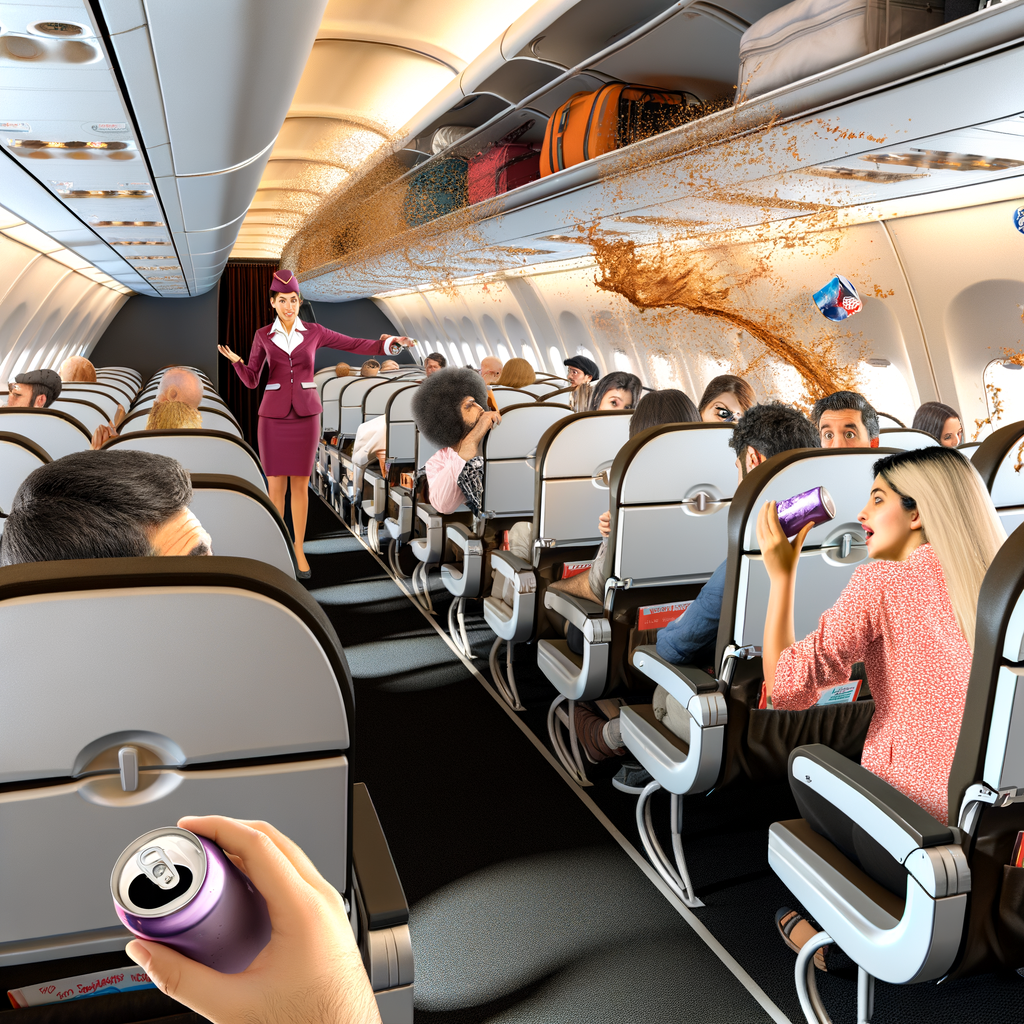Exploding Soda Cans on Southwest Flights Amid Extreme Heat
In an unexpected turn of events, passengers on Southwest Airlines flights have been reporting a peculiar and somewhat alarming phenomenon: soda cans exploding mid-flight. Specifically, this is linked to the extreme heat experienced during the summer months. This blog post delves into the causes, context, and preventive measures related to this unusual occurrence.
Why Are Soda Cans Exploding?
Soda cans are designed to withstand a certain amount of pressure; however, they are not impervious to the effects of extreme heat. The primary reasons for this unexpected scenario include:
- Temperature Fluctuations: When the aircraft is exposed to high ambient temperatures, it exacerbates the internal pressures within the soda cans. These fluctuating temperatures can manipulate the equilibrium inside the can, leading to ruptures.
- Pressure Changes: Air pressure inside the cabin changes during ascent and descent. When combined with high temperatures, this can lead to increased internal pressure within cans, causing them to explode.
- Can Integrity: While soda cans are built to contain contents under pressure, extreme conditions can exploit any weaknesses or manufacturing defects, leading to explosions.
Heat Impact on Airline Operations
The summer months often bring unprecedented heat which affects not just the passengers, but also the overall operations of airlines. Some critical aspects influenced by heat include:
- Increased Cabin Temperature: Despite advanced air conditioning systems, extreme external heat can raise cabin temperatures, posing a challenge for airlines to maintain optimum comfort levels.
- Aircraft Performance: Extreme heat can have adverse effects on engine efficiency and aircraft performance, requiring adjustments in take-off weight limits and fuel consumption rates.
Case Studies: Unfortunate Incidents
Several passengers recounted their experiences of soda cans exploding mid-flight, causing a mess and raising concerns about safety. Here are a few notable incidents:
Flight from Phoenix to Las Vegas
A family traveling from Phoenix to Las Vegas witnessed their unopened soda cans explode due to the high temperatures experienced on the tarmac and during flight. The resulting sticky mess and the sound of the explosions were alarming for fellow passengers.
Flight from Dallas to Los Angeles
During a Southwest Airlines flight from Dallas to Los Angeles, a passenger’s soda can ruptured due to extreme cabin temperatures, leading to a fizzy mess that quickly spread across seats and caused inconvenience to nearby travelers.
Preventative Measures and Solutions
Both airline operators and passengers can take several proactive steps to mitigate the risks of soda cans exploding during flights. Here are some useful tips:
For Passengers
- Pre-chill Beverages: Keeping your beverages cold before boarding can help reduce the risk of explosions. Bringing chilled or frozen drinks can additionally aid in minimizing the pressure.
- Avoid Direct Sun Exposure: Store soda cans away from direct sunlight when waiting on the tarmac. Place them in shaded or cooler bags if possible.
- Open Slowly: If you suspect that your soda can is under additional pressure, open it slowly and in an upright position to release the built-up pressure gradually.
For Airlines
- Enhanced Cooling Systems: Implementing more effective cooling systems while the plane is on the ground can help maintain a more stable interior temperature, thereby reducing pressure buildup in soda cans.
- Educational Campaigns: Educating passengers about the potential risks and best practices when carrying carbonated beverages can prevent mishaps.
- Temperature-Controlled Compartments: Storing beverages in specific, cooler compartments of the aircraft can mitigate risks associated with high temperatures.
Conclusion
While exploding soda cans on Southwest flights might seem like a peculiar issue, it highlights the broader challenges posed by extreme heat during summer months. Both airlines and passengers can adopt simple, yet effective strategies to mitigate these risks, ensuring safer and more comfortable journeys.
As we adjust to increasingly hot climates, awareness and collaborative efforts are paramount to overcoming these unique challenges. Remember to stay hydrated and travel safe!



